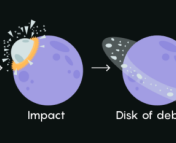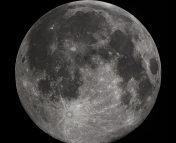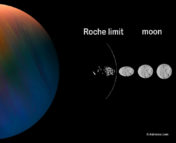Title: The resonant tidal evolution of the Earth-Moon distance
Authors: Mohammad Farhat, Pierre Auclair-Desrotour, Gwenaël Boué, Jacques Laskar
First Author’s Institution: IMCCE, CNRS, Observatoire de Paris, PSL University, Paris, France
Status: Published in Astronomy & Astrophysics [Open Access]
How you remind me
Does a song from your childhood come on and you instantly remember that one friend? You know the one: you were inseparable, you grew up together, but slowly and surely, you’ve drifted away from one another. You wouldn’t be who you are today without them, but they just aren’t by your side in the same way. Well, the same is true for celestial buddies. The Earth and the Moon might have been formed together, but the Moon is moving away from us here on Earth. There are slow forces at play that are making them slowly separate, but the history of how it happened is still being determined!
Can’t stop
The reason for the Moon receding is tides, the same ones we experience here on Earth. The Moon pulls on the Earth a little bit more on one side, and less on the other, which causes a tidal bulge, most notably in the oceans. That alone would be fine, but since the Earth is spinning, that bulge drags has to get dragged around the Earth, which effectively pulls energy out of the Earth’s rotation, and into the Moon’s orbit, causing it to slowly recede.
Don’t worry, it’s going to take a long time for the Moon to leave the Earth’s orbit. The current rate of recession is about 3 cm a year, and it’s been doing this for a long time, probably since it was formed 4.425 billion years ago during the hypothesized Theia-Earth collision. However, if you assume the current rate of recession has remained constant, then the “close encounter” that formed the Moon would have happened far more recently, only 1.6 billion years ago. This implies that the evolution of the Moon’s distance has changed over time.
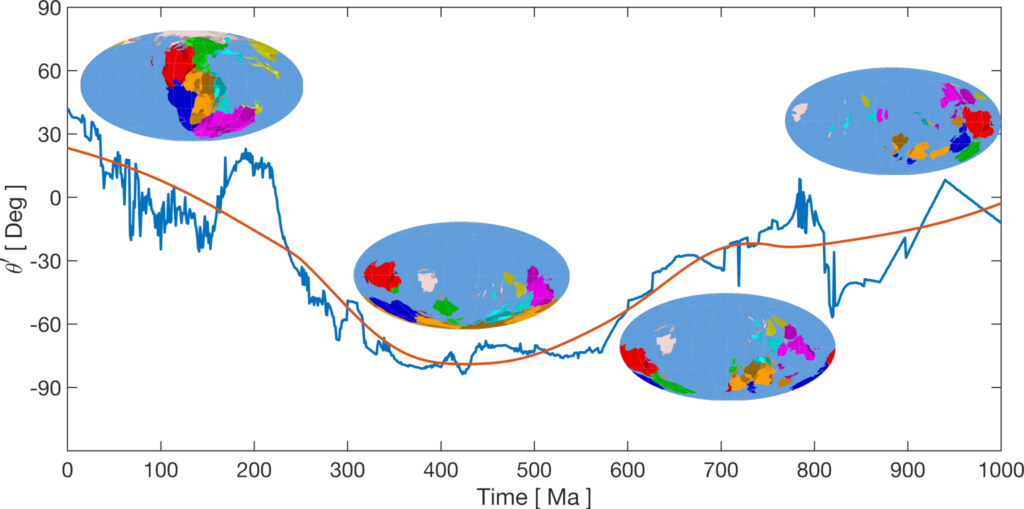
When you were young
The authors of today’s paper wanted to model the twisting force (or torque) applied by ocean tides which is the same torque that slows down the Earth’s day and causes the Moon to retreat. They tried three models, each more realistic; one that had a global ocean (think waterworld), one that says there is only an ocean on one hemisphere, and the third that starts with a global ocean, then switches to a hemisphere that then evolves the position of that hemisphere by roughly following the evidence of continental drift (Figure 1). Besides the shape of the ocean, their model also has an ocean depth, and a frequency or time scale that describes how quickly the ocean returns to normal after being pulled by tidal forces (kind of like the viscosity of the ocean).
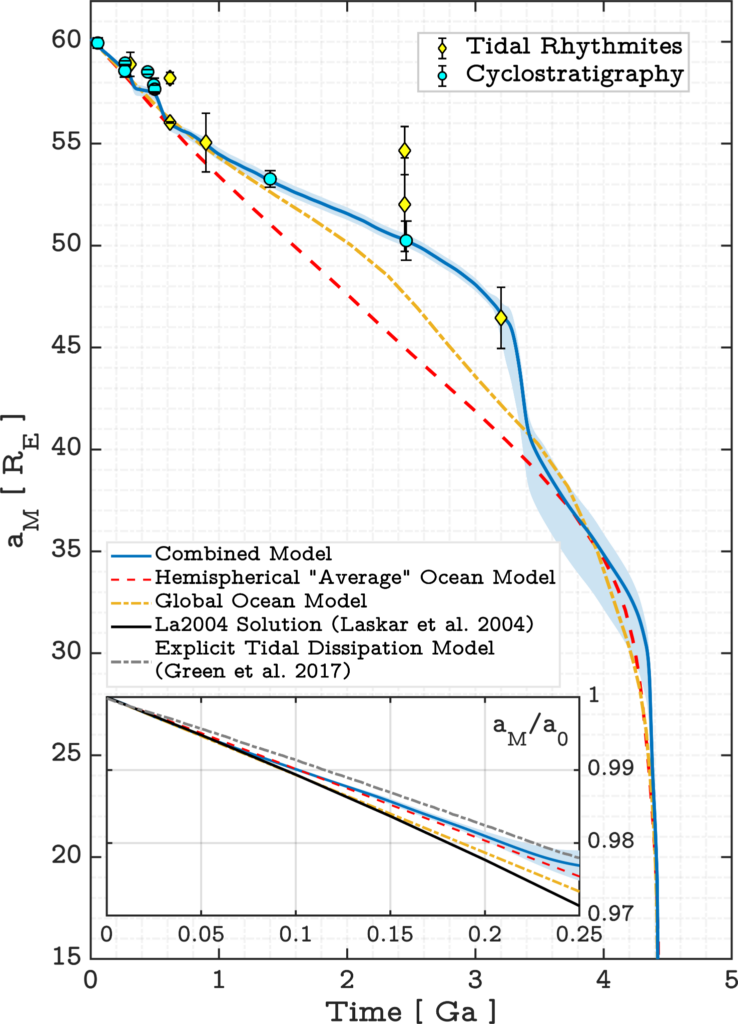
Here without you
They constrain the models with just two points, one the age of the moon as a starting point for the evolution, and two the current rate of recession today. After that they include as much orbital physics as they can, and let the resultant tidal torque drive the model from there. Different values for their ocean depth and ocean viscosity will create widely different Earth-Moon histories. The best combined model though has an ocean depth that matches the current volume of the real oceans to 10%, and a viscosity that is consistent with best measurements.
To see how their models compare with the actual Earth-Moon history, they plot geologic data that carries information about the moon’s distance on top of the best fits from the three models (Figure 2). As a reminder, they didn’t use this data to create the models. However, the fit to the data is stunning, especially for the realistic combined model! It also demonstrates a few periods of resonance where the torque was high and the Moon quickly moved away (such as 3.35 billion years ago, but also more recently at 350 and 600 million years ago). We might even be in one right now!
In the end
The fact that the Moon is slowly getting further away doesn’t need to be a sad thing. Beyond the significance of having a moon for life, the authors point out that some of the moments of tidal resonance coincide with major events in the history of life on Earth, as well as periods of calm. Just like our childhood friendships, the transience of it can give meaning to the importance it had in forming where we are today. Next time you look up at the Moon, think about its indispensable influence on the Earth’s history, and also maybe think about texting that friend you haven’t seen in a while.
Astrobite edited by Maryum Sayeed
Featured image adapted from NASA

